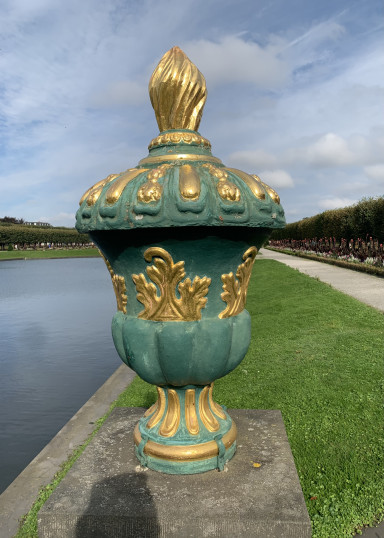

Stephan Zilkens
,
Zilkens' News Blog 45 2024
If you think about it, Christmas will be over in eight weeks. And there is a lot going on between now and then that has nothing to do with the US elections tomorrow: Artissima in Turin has just ended – or so I'm told, it was a success. The European Registrars are meeting in Rome from Wednesday for three days of lectures by experts, but also sponsored lectures. The backbone of the museum landscape no longer seems to be able to manage without sponsorship. Sponsors range from silver to platinum, and the more they pay, the more publicity they are allowed. Platinum donors are then also allowed to give a lecture. Otherwise, the topics are sustainability or new frontiers, and anything that cannot be subsumed under these two topics then goes into the miscellaneous section. However, the personal exchange between participants is invaluable. At the same time, and this is a shame, MUTEC, the trade fair for museum technology, is taking place at the Leipzig Trade Fair Centre, which means that the registrars will have to do without the registrars who are in Rome. It's a real problem with Europe when even small interest groups can't coordinate their schedules. On the other hand, it's fortunate for the ‘Riegel’ cultural protection prize, because it won't be awarded again until 2025 and the forum is free to choose its own.
And then there is also Art Cologne, which opens its doors on Thursday. Very few registrars buy art, so now we can only hope that the election result in the USA does not, in addition to all the spookiness that we feel due to the various fear scenarios surrounding us, take the fun out of collecting for collectors. No money, no fun applies at least to the art trade, and less so to those who create art. There, one can observe time and again that existential pressure leads to groundbreaking results – this applies, for example, to Van Gogh and also to the early Picasso, to look back more than a century.
Art history and classical archaeology are generally considered to be niche subjects – nice to have, but not really fitting into an environment that is economised and trimmed for efficiency outside of public administration. What the Federal Office for Building and Regional Planning is already practising at Berlin Airport or now at the Pergamon Museum - namely, not adhering to budgets and schedules - can also be done on a small scale. The original cost estimate for the renovation of the Archaeological Institute of the University of Bonn was around EUR 7 million. That's quite a lot when you consider that you can build apartments for less than 100,000 euros. Due to fire protection requirements and those of accessibility, the costs are now rising to over €44 million. Rumours are circulating in Cologne city council that the general renovation of the Ludwig Museum and the Philharmonic Hall will cost 4 billion. The reason for this is said to be fire protection (which also played a decisive role in the opera). The insurance industry should actually be pleased that so much importance is attached to always complying with the latest regulations, which were not yet known when the tender was issued, when the building is accepted. No production plant without a fire protection concept – but from the insurance side, the aim is always to reconcile economic efficiency with making wishes come true. After all, they are still risk carriers. When it comes to the latter, there seems to be a lack of willingness in the public sector. Excessive fire protection does not eliminate the risk of fire, but it does prevent the completion of buildings that are supposed to impart knowledge and enjoyment to us all. Here, too, state interventionism leads to ugly side effects and bureaucratic burdens. In the library of the archaeologists in Bonn, the shelves were placed 80 cm apart. This is not wheelchair accessible. There must be at least one metre. There aren't many wheelchair-bound archaeologists (and there should be fellow students who could help you in the library?!) but with the new width, a few rows of shelves will be eliminated because the rooms simply don't want to expand. And books on paper are out anyway – everything is on the internet. Now I'm just wondering, why do the shelves have to be placed further apart?
Regardless of the outcome of the US election, we cannot ignore it but must adapt to it. Perhaps the result will help Europe to work more on its common idea again, in order to move forward together as a confederation of states, with less bureaucracy.
On that note, I wish you a good week in Leipzig at the Museumsbund, in Rome at the registrar conference, in Cologne at the Art or simply wherever you are.
The team at Zilkens Fine Art Insurance Broker GmbH in Solothurn and Cologne
automatically translated